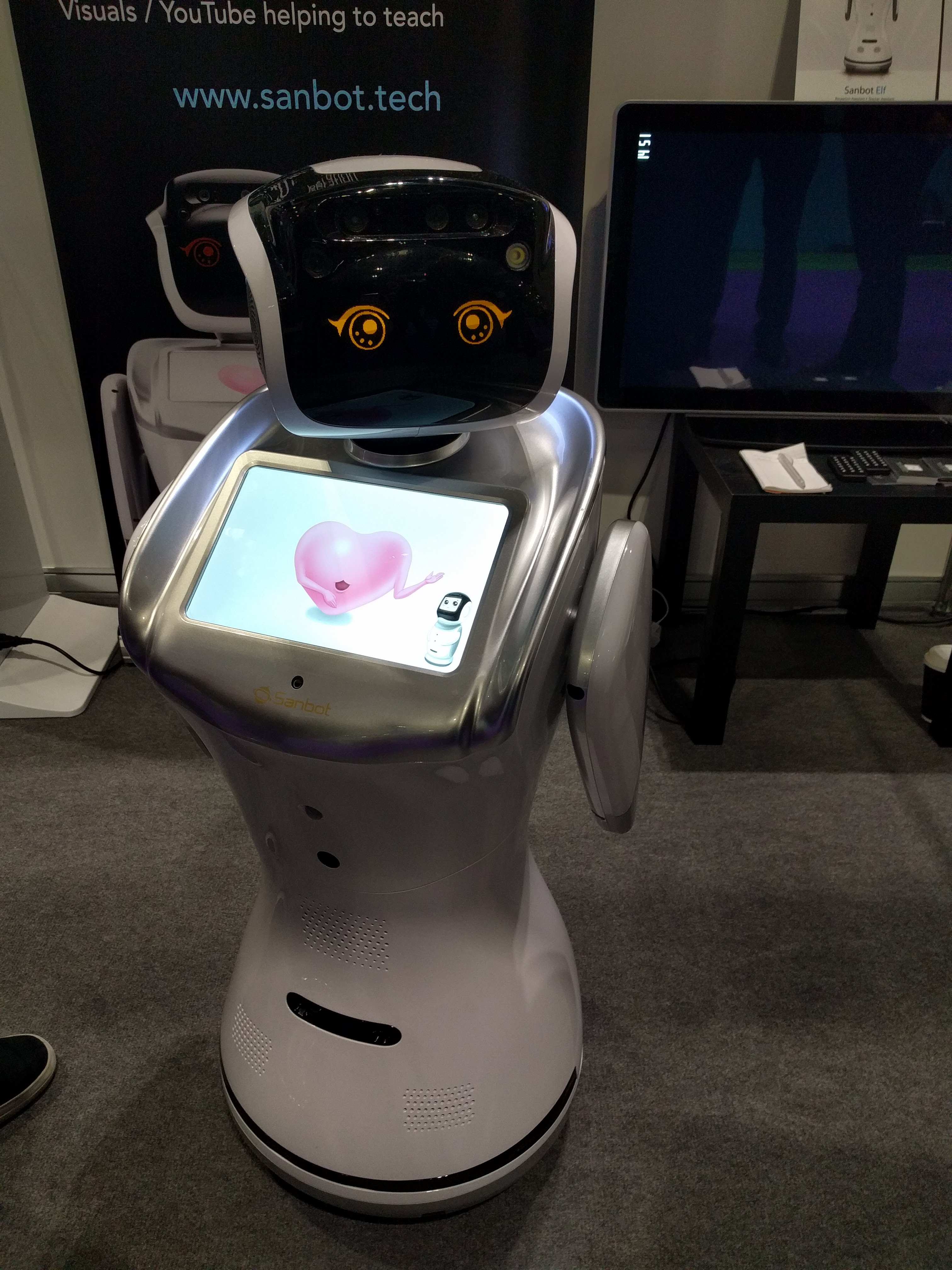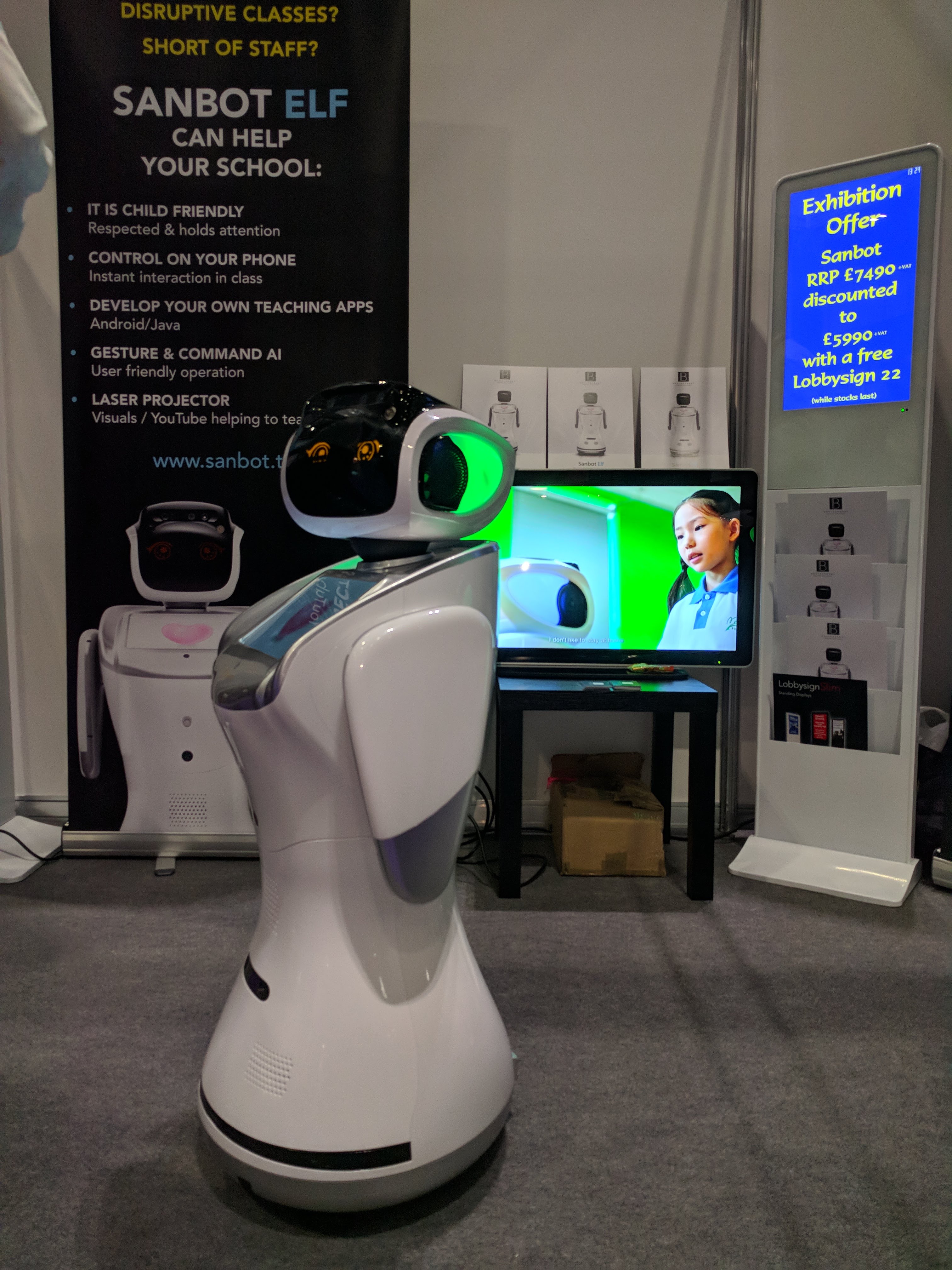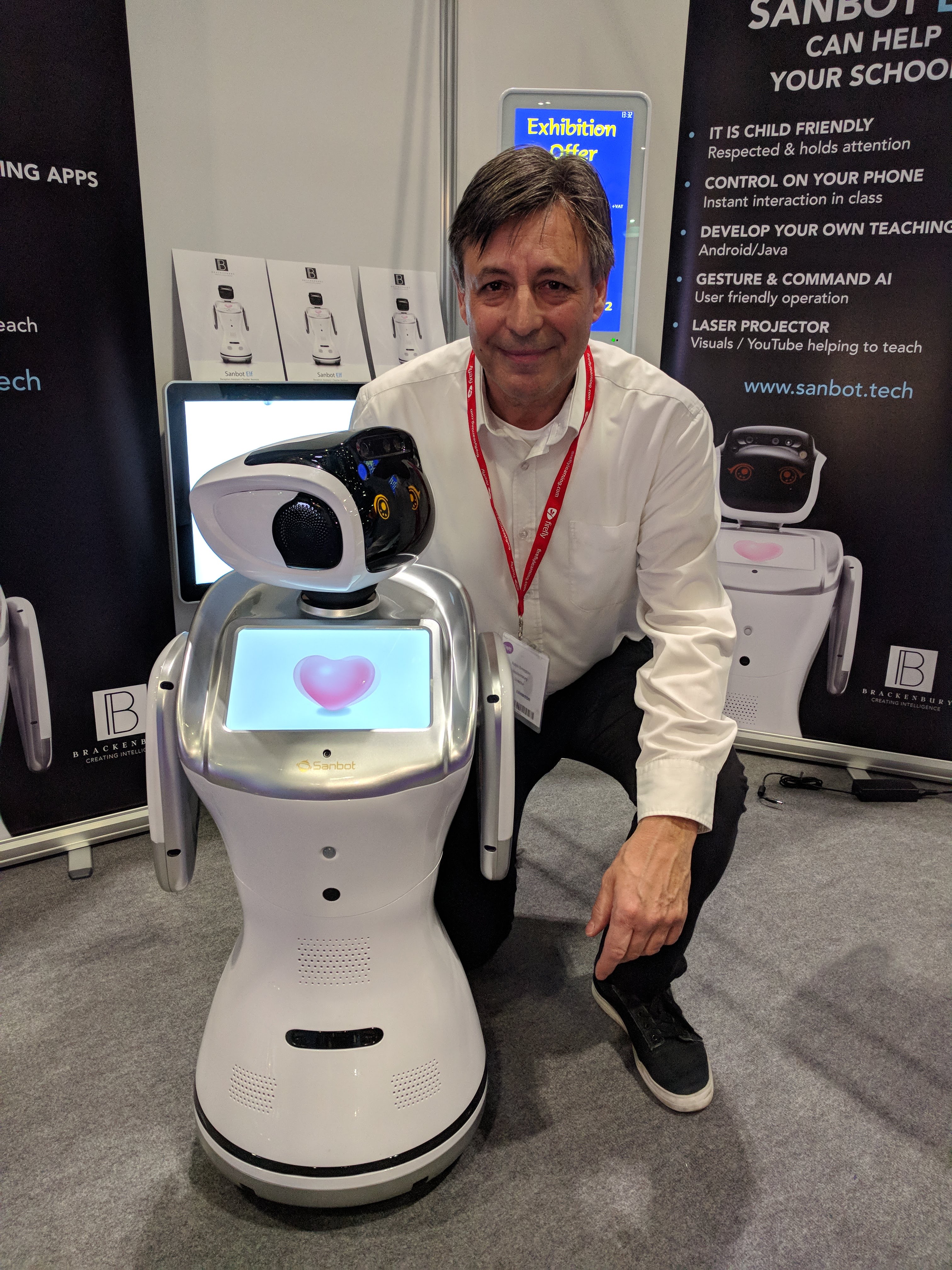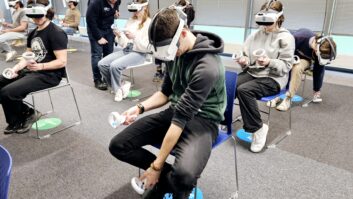It’s true. Robots are now being used to help save schools money, assist teachers, boost student learning and even host parents’ evenings
No, this isn’t a piece of science fiction, nor one to be to placed on the ‘one for the future’ shelf. Robots are here and they’re being used in classrooms today, helping teachers, assisting students and even taking part in parents’ evenings, is now a reality – and we’ve just seen one in action.
The robot in question, is called Sanbot, one of three models built by Shenzhen based ‘robotics as a service’ firm Qihan Cloud, mixing (what it claims to be) a ‘perfect blend of human and machine’.
The (cute?) looking invention has been designed to provide a more “warm” and “comfortable” portrayal of robots in educational, retail, health and medical environments and anywhere with a reception.

The bot, which is being showcased at Bett 2018 in London this week, uses AI to be able to sense (see, identify) human beings, read gestures and facial expressions, and uses natural language processing (NLP) to be able to understand and respond to voice commands.
Emotions and motions
Visually, Sanbot Elf (to give ‘it’ its full name) uses an HD display on its ‘heart’ (chest area) to display its ‘emotions’ as well as controlled content (preloaded lesson material), which can also be projected on the wall, thanks to an embedded projector at the back of its head. (Think R2D2 in Star Wars).
The bot also moves on its base, detecting and avoiding obstacles, raising its arms, turning and nodding its head, displaying colourful lights according to its mood.
“People should see it as a way forward for the school. Integrating a robot as a way of bringing technology to the forefront of the school because children love it. There is an emotional appeal to it”
It can in a sense take over lessons and give the teacher a break by refocusing the children’s attentions
In the UK, the firm is represented, distributed and sold by Brakenbury – a firm set up by CEO Robin Errington (headline picture), who has been inundated by requests for demonstrations during the show.
“Sanbot, is a service for schools,” he told AVTE. “It’s a teacher assistant and a reception assistant. It does a multitude of things, but most importantly, it can be tailored to the individual school’s requirements. So that means it can be programmed to teach specific things in class, or do specific things in reception areas that it’s asked to do.”
Threat to jobs?
One of the big fears surrounding the subject of AI – aside from a Terminator like scenario where humans are no longer required – is the possible replacement of jobs.
There is, unfortunately, plenty to suggest this will be the case, particularly in the automotive industry (self driving taxis, public transport), fast food chefs, cashiers and any job that requires paper work to be completed.
Last year, the Bank of England’s chief economist said that 80m US and 15m UK jobs could be taken over by robots. Google suggests that robots will reach levels of human intelligence by around 2029, and IT research firm Gartner estimates that by 2025, one-third of jobs will be replaced by robots and smart machines.
However, many jobs will be redefined, rather than removed – with AI and robots seen as an enhancer rather than a replacement.The impact on teaching is one which has not been listed as particularly alarming, but technology – particularly AV, will continue to evolve and advance teaching methods.
Robin insists, for now at least, bots like Sanbot are not here to replace – but to enhance teaching abilities within academia, using the latest technology to help immerse students and bring some “fun” to learning.

“We don’t see this as a replacement,” he explained, as Sanbot began a colourful rendition of ‘Old McDonald Had Farm beside us. “It’s an assistant that gives another dimension within the classroom. It means it will supplement what the teacher is trying to teach. It could be a very difficult scientific formula for example, or it could be an equation in math’s, geography or whatever. It can do a specific teaching project or it can interact as well. You can have a conversation with Sanbot using a special package that we provide. It will display and run visuals such as YouTube videos on its screen and through its projector. It’s proving very useful and is being very well received.”

USP
Sanbot is of course not the only robot in existence – nor at the show – which proclaims to be able to offer such services to the market. Pepper – built by Japanese giant Softbank – is also present here at Bett, and has been doing the rounds for sometime, often appearing on trade show stands, but also (in Japan) assisting customers in retail stores and even popped up in a Hilton hotel, helping guests with directions, booking in and information of local attractions.
It can potentially save money by putting useful apps on it and helping teachers in class
But Errington believes Sanbot stands tall above its rivals, particularly with its form-factor (less “weird looking”) as well as having no API, meaning the school will have “total flexibility” over programming it to do exactly what they want it to do.
“The school will never have to go to the manufacturer to get them to do all the programming and provide expensive software.
He added: “People should see it as a way forward for the school, and integrating a robot as a way of bringing technology to the forefront of the school because children love it. There is an emotional appeal to it.”

And whilst Errington insists Sanbot is not there to replace people and remove jobs, he admits there is a cost saving opportunity to be had.
“It can potentially save money by putting useful apps on it and helping teachers in class. It will save them money because in some instances, they won’t need to bring in additional teaching assistants.
“Depending on how wide spread its uses are, which can be quite considerable, it can in a sense take over lessons and give the teacher a break by refocusing the children’s attentions. At the end of the day, they will probably end up with better results.
“It can also be used in the school reception area to welcome visitors and save money on additional reception staff.”
Parents evening
He continued: “Sanbot could perhaps even present at school parents evenings,” he said. “It could present the school and you could program in some information about the school, some new developments for example and captivate people’s attention that way. We’ve had it on stage using the projector and it looks great and everyone loves it.”
Sanbot is available for £7,499 but can be purchased at the show for a discounted price of £5,999. Interest, he suggest, has been high.
“It’s a big discount and boy has it worked,” he finished – as Sanbot once again took our attentions, dancing away to a high-pitched catchy Chinese musical number.
For more information, visit: http://brackenbury.tech








